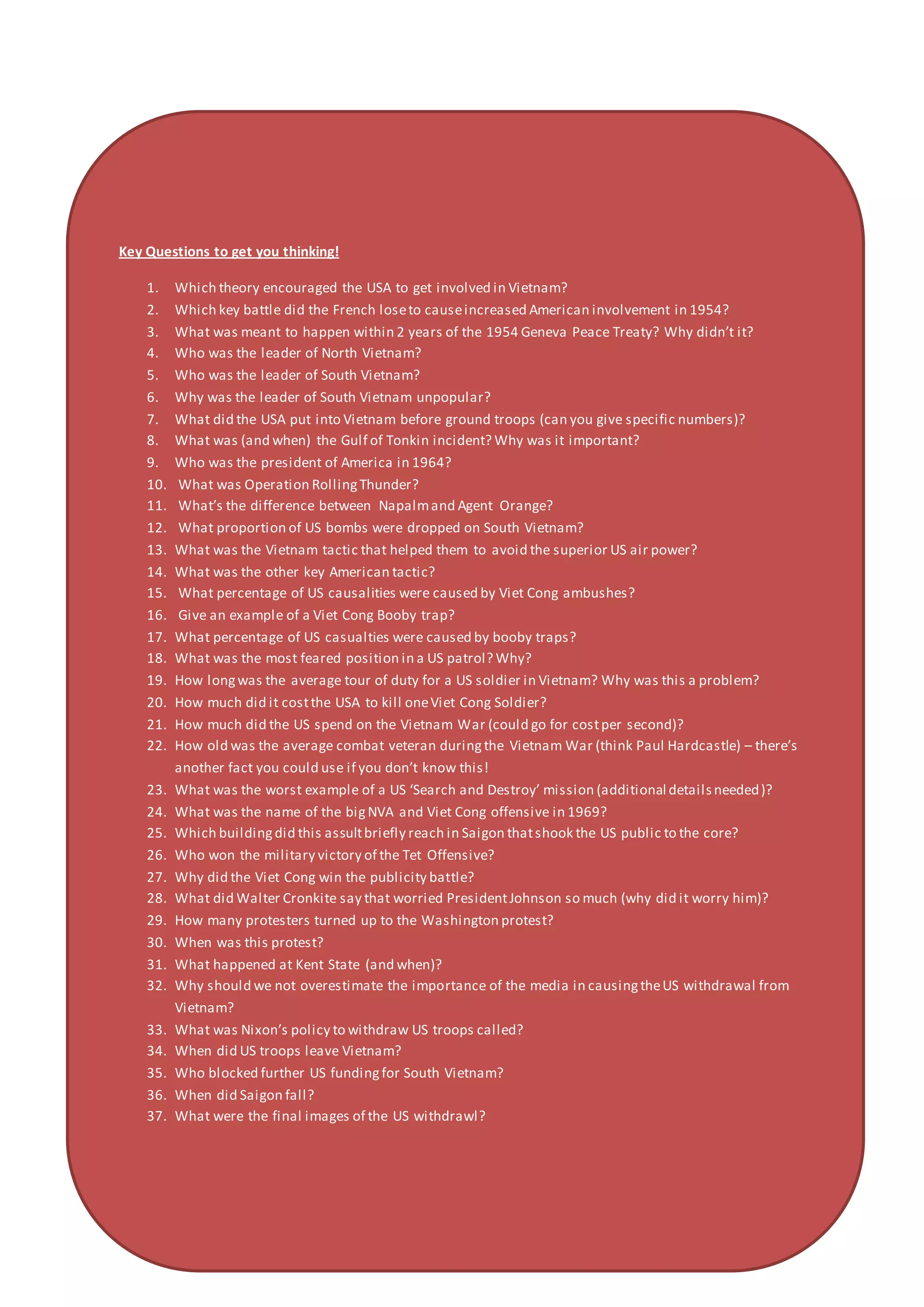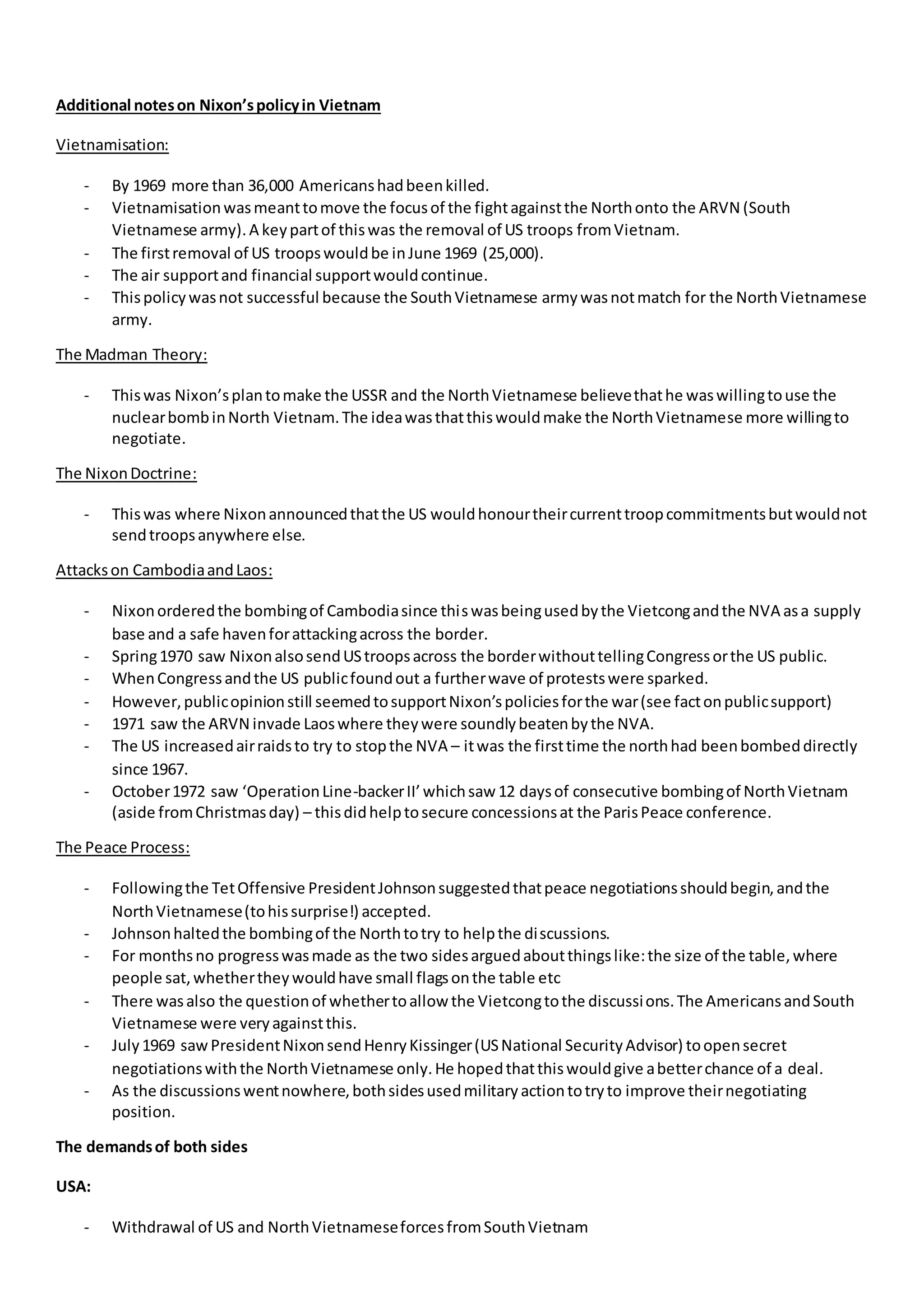1. The United States initially got involved in Vietnam to contain the spread of communism according to the Domino Theory and policy of containment. They supported France in fighting the Viet Minh and later the South Vietnamese government against the Viet Cong.
2. After the French defeat at Dien Bien Phu in 1954, Vietnam was divided and elections were to reunite the country but the US feared communism would spread so they increased support for South Vietnam.
3. US involvement escalated throughout the 1960s despite growing opposition until all US troops left Vietnam in 1973 after failed policy of Vietnamization showed South Vietnam could not stand on its own against the North.









